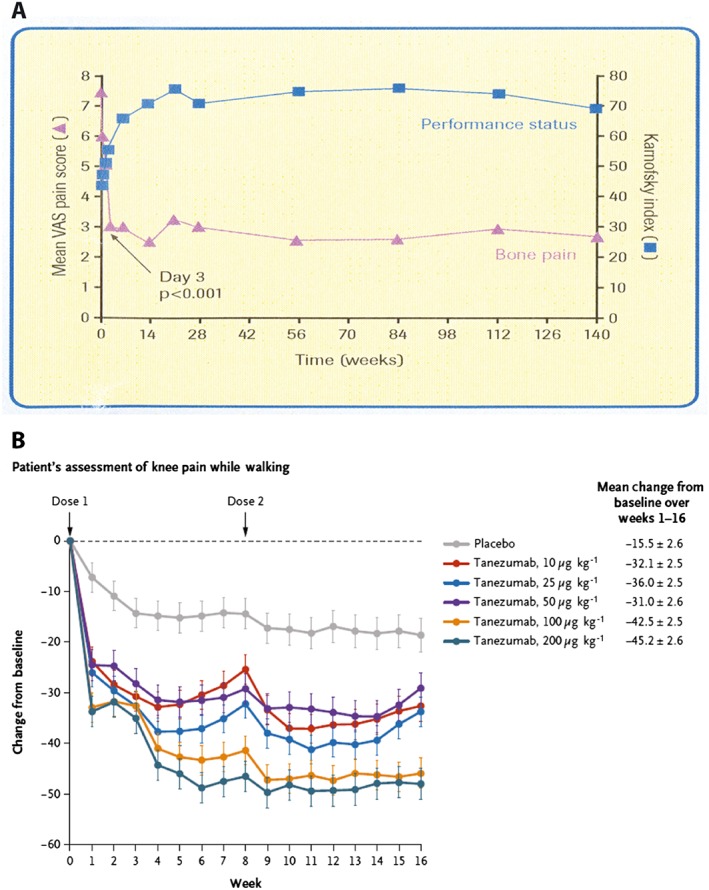Figure 5.

Data showing that blocking osteoclast activity or nerve growth factor can attenuate human bone pain. Data from a human trial (A) showing a reduction in bone pain and an increase in functional status of patients with breast cancer metastases to bone following administration of a bisphosphonate (ibandronate), which targets osteoclasts and reduces bone acidosis. Recent data have demonstrated that bisphosphonates can also reduce pain in osteogenesis imperfect, Paget's disease, fibrous dysplasia and complex regional pain syndrome. Results from a human clinical trial (B) showing that anti‐nerve growth factor (tanezumab) can reduce chronic osteoarthritis pain. Anti‐NGF therapy has also been shown to attenuate pain in patients with low back pain and in bone cancer patients with high pain and low opiate use. These data suggest therapies that attenuate one type of bone pain may be effective in reducing pain in seemingly unrelated bone diseases if the diseases share a common mechanism(s) that is driving the pain. Data in (A) are from Ringe et al. (2007) and Body et al. (2004) 59, 60 and in (B) from Lane et al. (2010) 121. VAS, visual analogue scale
